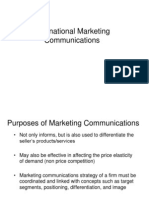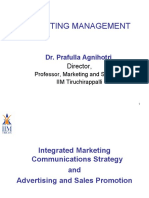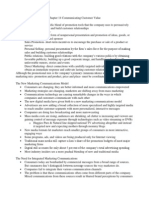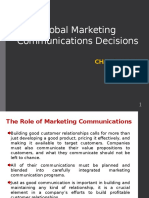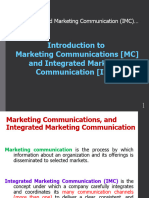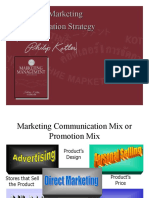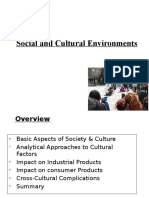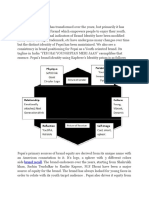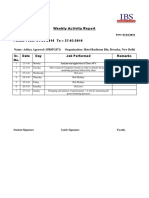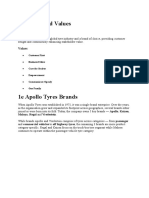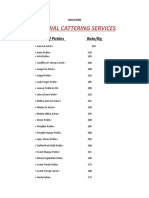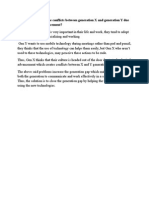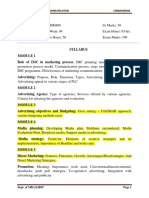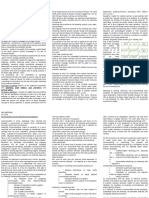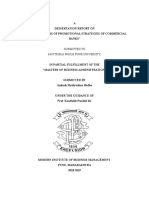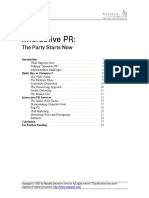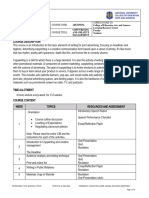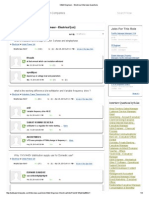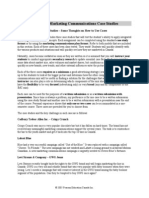CHAPTER 9
Integrated Marketing
Communications
�������������������Old Spices Advertising Campaign
https://www.youtube.com/watch?v=VrdqqTvyiV8
�21
�22
�����Celebrity endorsers
may be movie stars,
politicians, sports stars,
or other public
personalities
Testimonials feature
ordinary people who
talk about their product
experiences
�UNISYS
Info-tech company Unisys undertook a radical change in ad direction in
2006. The company bought print ads in Fortune magazine, but only in select
magazines going to about 20 chief information officers at major corporations
such as DHL, Subaru of America, Citigroup, and Northwest Airlines. These
executives opened the cover wrap of an actual Fortune magazine edition to
see their own faces smiling up at them. On the reverse side was a
customized letter written by a Unisys manager that spoke to the unique
challenges in the executive's industry. Also featured were links to mock
news videos mentioning the executive's name and a capsule bio focusing on
business achievements.
Flattery will get you somewhere, according to Unisys's marketing
department. To integrate the ads with other forms of marketing
communications, Unisys also strategically placed billboard ads (not featuring
photos of the executives) so that the executives would see them on their
daily commute and even hired field teams to scope out how these highranking men and women got to work or where they stopped for coffee.
�29
India's leading advertisers in 2013 by
media spend
Unilever India
(Ad Expenditure: US$7.22bn 2014 )
Procter & Gamble
Samsung
GlaxoSmithKline (Horlicks, Boost, Crocin, Eno and
Iodex)
Cadbury
Aditya Birla
ITC
Tata Motors
Reckitt Benckiser (Paras Pharmaceuticals)
PepsiCo
Coca cola
�Marketing Communications
Marketing communications are the means by which
firms attempt to inform, persuade, and remind
consumers about the products and brands they sell. In a
sense, marketing communications represent the voice of
the company and its brands.
(http://www.youtube.com/watch?v=YAYbUmT53Ys)
�Marketing Communications Can:
Help firms establish a dialogue and build relationships with consumers and
strengthen customer loyalty, and thus contribute to customer equity.
Work for consumers when by showing how and why a product is used, by
whom, where, and when. Consumers can learn who makes the product and
what the company and brand stand for, and they can get an incentive for trial
or use.
Allow companies to link their brands to other people, places, events, brands,
experiences, feelings, and things.
Contribute to brand equity by establishing the brand in memory and creating a
brand image.
Drive sales and even affect shareholder value.
�Role of Marketing Communications
Inform
Persuade
Remind
�Objectives of Promotional
Strategy
�Elements in the Communication
Process
15- 34
�Reaching the Customer: Encoding, Noise,
and Decoding
NOISE
Other ads
News articles
Other store displays
SENDER
Mktg mgr
Advertising mgr
Advertising
agency
ENCODING
THE
MESSAGE
Advertisement
Coupon
Sales presentation
Press release
Store display
MESSAGE
CHANNEL
DECODING
THE
MESSAGE
Media, Salesperson
Retail store
News program
Receiver
interpretation of
the message
CHANNEL
FEEDBACK
RECEIVER
Customers
Media audience
News media
Clients
��The Communications Process
Selective attention
Selective distortion
Selective retention
�Response Hierarchy Models
�An Ideal Ad Campaign
The right consumer is exposed to the message
at the right time and place
The ad causes consumer to pay attention
The ad reflects consumers level of
understanding and behaviors with product
The ad correctly positions brand in terms of
points-of-difference and points-of-parity
The ad motivates consumers to consider
purchase of the brand
The ad creates strong brand associations
�Identify the Target Audience
Potential Buyers
Deciders or
Influencers
Current
Users
�Communications Objectives
Category Need
Brand Awareness
Brand Attitude
Purchase Intention
�1.
Category Need- Establishing a product or
service category as necessary to remove or
satisfy a perceived discrepancy between a
current motivational state and a desired
emotional state.
A new-to-the-world product such as electric
cars would always begin with
communications objective of establishing
category need.
�2.Brand Awareness-Ability to identify (recognize
or recall) the brand within the category, in
sufficient detail to make a purchase.
Recognition is easier to achieve than recall consumers asked to think of a brand of frozen
entrees are more likely to recognize Stouffer's
distinctive orange packages than to recall the
brand.
Brand recall is important outside the store; brand
recognition is important inside the store.
Brand awareness provides a foundation for brand
equity.
�3. Brand Attitude-Evaluating the brand with respect to
its perceived ability to meet a currently relevant need.
Relevant brand needs may be negatively oriented
(problem removal, problem avoidance, incomplete
satisfaction, normal depletion) or positively oriented
(sensory gratification, intellectual stimulation, or
social approval).
Household cleaning products often use problem
solution; food products, on the other hand, often
use sensory-oriented ads emphasizing appetite appeal.
�4. Brand Purchase Intention-Self-instructions to purchase
the brand or to take purchase-related action.
Promotional offers in the form of coupons or two-for-one
deals encourage consumers to make a mental commitment
to buy a product.
But many consumers do not have an expressed category
need and may not be in the market when exposed to an ad,
so they are unlikely to form buy intentions.
For example, in any given week, only about 20% of adults
may be planning to buy detergent; only 2% may be
planning to buy a carpet cleaner; and only 0.25% may be
planning to buy a car.
�Designing the Communications
Message strategy
Creative strategy
Message source
�Design Communications
What to say?
(Message Strategy)
Who should say it?
How to say it?
(Creative Strategy)
(Message source)
�MESSAGE STRATE GY
In determining message strategy, management
searches for appeals, themes, or ideas that will
tie into the brand positioning and help to
establish points-of-parity or points-ofdifference.
�MESSAGE CONTENT
The communicator has to figure out an appeal or
theme that will produce the desired response.
Rational appeals- relate to the audiences selfinterest. They show that the product will produce
the desired benefits.
Messages showing a products quality, economy,
value or performance.
Thus, in its ads, Mercedes offers automobiles that
are engineered like no other car in the world,
stressing engineering design, performance and
safety.
�Emotional appeals- attempt to stir up either
positive or negative emotions that can
motivate purchase.
Communicators may use positive emotional
appeals such as love, humour, pride, promise of
success and joy.
Some of these may be related directly to product
or service performance (the quality, economy, or
value of the brand), whereas others may relate to
more extrinsic considerations (the brand as
being contemporary, popular, or traditional).
�British Telecoms Make someone happy with a
phone call and Its good to talk campaigns
stir a bundle of strong emotions.
Ad campaigns for Hagen-Dazs equate icecream with pleasure
�Communicators can also use negative
emotional appeals, such as fear, guilt and
shame appeals in order to get people to do
things they should (brush their teeth, invest in
a pension plan, buy new tyres) or to stop
doing things they shouldnt (smoke, drink too
much, eat fatty foods).
Michelin tyre ads that featured cute babies
and suggested Because so much is riding on
your tyres.
�Push Versus Pull Promotional Strategies
Refers to the direction of promotional effort
Exists as a range, yet most companies use a
combination of both
Figure 15.4
15.53
�CREATIVE STRATEGY
Communications effectiveness depends on how
a message is being expressed, as well as on the
content of the message itself.
Creative strategies are the way marketers
translate their messages into a specific
communication.
We can broadly classify them as either
informational or transformational appeals
�INFORMATIONAL APPEAL
elaborates on product or service attributes or
benefits.
Problem solution ads (Excedrin stops the toughest
headache pain),
product demonstration ads (Thompson Water Seal
can withstand intense rain, snow, and heat),
product comparison ads (DirecTV offers better
HD options than cable operators),
testimonials from unknown or celebrity endorsers
(NBA phenomenon LeBron James pitching
Sprite, Powerade, and Nike).
�TRANSFORMATIONAL APPEAL
elaborates on a non-product-related benefit or
image.
It might depict what kind of person uses a
brand (VW advertised to active, youthful
people with its "Drivers Wanted" campaign) or
what kind of experience results from using the
brand (Pringles advertised "Once You Pop, the
Fun Don't Stop" for years).
Transformational appeals often attempt to stir
up emotions that will motivate purchase.
��MESSAGE SOURCE
Many communications do not use a source beyond the
company itself. Others use known or unknown people.
Messages delivered by attractive or popular sources can
achieve higher attention and recall, which is why
advertisers often use celebrities as
spokespeople.
Celebrities are likely to be effective when they are
credible or personify a key
product attribute.
� Message Source
credibility important
expertise
trustworthiness
likability
�ACCENTURE
What better symbol for high performance than Tiger Woods, the
world's number-one golfer? That's why business consulting firm,
Accenture, was persistent in seeking to use the golfer as the
linchpin for its rebranding cam-paign.
Enter Tiger Woods and the new tagline "High Performance
Delivered."
Accenture's message is that it can help client companies become
"high-performing business leaders," like the ones featured on its
Web site.
The Woods endorsement drives home the importance of high
performance, just as Woods drives home yet another
championship.
�Select Channels
Personal Communications
http://www.youtube
.com/watch?v=c25Qv
7Ez8nU
NonPersonal (Mass) Communications
�Personal communications channels let two or
more persons communicate face-to-face or
person-to-audience through a phone, surface
email, or e-mail. They derive their effectiveness
from individualized presentation and feedback
and include direct and interactive marketing,
word-of-mouth marketing, and personal selling.
Non-personal channels are communications
directed to more than one person and include
advertising, sales promotions, events and
experiences, and public relations.
�MINI COOPER
The tiny Mini automobile was sold for only seven years in the United States,
during the 1960s, before it was withdrawn due to stiff emission regulations.
In March 2002, BMW decided to relaunch a new, modernized Mini Cooper in
the United States, targeting hip city dwellers who wanted a cool, fun, small car
for under $20,000.
With only $20 million to spend on the introduction, the Mini marketers decided
to launch a guerrilla communications campaign featuring nontraditional uses of
billboards, posters, print ads, and grassroots efforts, and no TV ads.
The Mini was stacked on top of three Ford Excursion SUVs and driven around
national auto shows and 21 major cities.
The car showed up in other unusual places, such as inside a sports stadium as
seats and inside Playboy as a centerfold. Text-only billboards proclaimed: "THE
SUV BACKLASH OFFICIALLY STARTS NOW," "GOLIATH LOST," and
"XXL-XL-L-M-S-MINI."
Many communications were linked to a cleverly designed Web site that
provided necessary product information. The imaginative campaign resulted in
a buyer waiting list that was six
months long in spring 2002.
�Establish Budget
CompetitiveParity
Affordable Method
Objective-andTask
Percentage-of-Sales
�Setting the Promotional Budget
Affordable
method
What management thinks
the company can afford
Percentage-of-sales
method
The budget as a percentage
of forecasted sales
Competitive-parity
method
Setting the budget to
match competition spending
1.
Objective-and-task
method
2.
3.
4.
Defining specific objectives
Determining tasks needed
Estimating costs of tasks
Adding total costs
15.65
�Deciding on Marketing Communications Mix
Characteristics
Measuring
Factors
�Marketing Communications Mix
Advertising
Sales promotion
Events and
experiences
Public relations and
publicity
Direct marketing
Interactive marketing
Word-of-mouth
marketing
Personal selling
�. Advertising- Any paid form of non-personal
presentation and promotion of ideas, goods, or
services by an identified sponsor
2. Sales promotion-A variety of short-term
incentives to encourage trial or purchase of a
product or service
3. Events and experiences-Company-sponsored
activities and programs designed to create daily
or special brand-related interactions
4. Public relations and publicity-A variety of
programs designed to promote or protect a
company's image or its individual products
1
�Direct marketing-Use of mail, telephone, fax, e-mail,
or Internet to communicate directly with or solicit
response or dialogue from specific customers and
prospects
6. Interactive marketing-Online activities and programs
designed to engage customers or prospects and directly
or indirectly raise awareness, improve image, or elicit
sales of products and services
7.Word-of-mouth marketing-People-to-people oral,
written, or electronic communications that relate to the
merits or experiences of purchasing or using products or
services
8. Personal selling-Face-to-face interaction with one or
more prospective purchasers for the purpose of making
presentations, answering questions, and procuring
orders
5.
��Advertising
Communication Platforms
Events and
Sales Promotion
Print and
broadcast ads
Contests, games,
sweepstakes,
lotteries
Packaging
Premiums and gifts
Cinema
Sampling
Brochures
Fairs and trade
Posters
Sports
Entertainment
Festivals
Arts
Causes
shows
Billboards
Coupons
Display signs
Point of purchase
displays
Rebates
Trade-in allowances
Tie-ins
Experiences
http:/www.youtube.com/watch?v=
ICB3j9VbXn4/
Factory tours
Company
museums
Street activities
�Communication Platforms
Public Relations
and Publicity
Direct and
Interactive
Marketing
Personal Selling
Sales
presentations
Samples
Incentive
programs
Fairs / trade
shows
Press kits
Speeches
Catalogs
Seminars
Mailings
Annual reports
Telemarketing
Charitable
Electronic shopping
donations
TV shopping
Publications
Email
Word-of-Mouth
Lobbying
Company blogs
Person-to-person
Company
Web sites
Chat
magazine
rooms/Blogs
�Setting
Setting the
the Promotion
Promotion Mix
Mix
Nature of Each Promotion Tool
Advertising
Advertising
Reaches
ReachesMany
ManyBuyers,
Buyers,Expressive
Expressive
Impersonal
Impersonal
Personal
Selling
Personal Selling
Personal
PersonalInteraction,
Interaction,Builds
BuildsRelationships
Relationships
Costly
Costly
Sales Promotion
Sales Promotion
Provides
ProvidesStrong
StrongIncentives
Incentivesto
toBuy
Buy
Short-Lived
Short-Lived
Public
PublicRelations
Relations
Believable,
Believable, Effective,
Effective,Economical
Economical
Underused
Underusedby
byMany
ManyCompanies
Companies
Direct
DirectMarketing
Marketing
15- 73
Nonpublic,
Nonpublic,Immediate,
Immediate,Customized,
Customized,
Interactive
Interactive
�Advertising Characteristics
1. Pervasiveness-Advertising permits the seller to
repeat a message many times. It also allows the
buyer to receive and compare the messages of
various competitors. Large-scale advertising
says something positive about the seller's size,
power, and success.
2. Amplified expressiveness-Advertising provides
opportunities for dramatizing the company and
its products through the artful use of print,
sound, and color.
3. Impersonality-The audience does not feel
obligated to pay attention or respond to advertising. Advertising is a monologue in front of,
�SALES PROMOTIONS
1. Communication-They gain attention and
may lead the consumer to the product.
2. Incentive-They incorporate some
concession, inducement, or contribution
that gives value to the consumer.
3.Invitation-They include a distinct
invitation to engage in the transaction now.
�Characteristics of
the Marketing Communications Mix
Public Relations
and Publicity
High credibility
Ability to catch
buyers off guard
Dramatization
Events and
Experiences
Relevant
Involving
�Characteristics of
the Marketing Communications Mix
Direct Marketing
Customized
Up-to-date
Interactive
Personal Selling
Personal interaction
Cultivation
Response
Word-of-Mouth Marketing
Credible
Personal
Timely
�GENERAL ELECTRIC
Beginning in 2005, GE initiated an integrated marketing campaign that
included TV, print, and online advertising
as well as events, to let customers know GE products and services help
protect the environment.
The campaign was dubbed "Ecomagination" and highlighted GE's solar
energy products and hybrid locomotives, fuel cells, and lower-emission
aircraft.
The ads, developed for the company by BBD&O, revolved around this
simple, central concept: Although the world's natural resources may be
limited, the human imagination is unlimited.
In print ads entitled "Shadows," for instance, the shadow of a GE aircraft
engine appeared as a giant bird, and the shadow
of a GE locomotive as a herd of zebras.
The ads, events, and interactive online ads and games all proved extremely
successful for GE. Revenue for Ecomagination products in 2005 totaled $10
billion, up 63% from 2004.
�Cost Effectiveness by Buyer Readiness
Stage
�Measuring Communication Results
Reach
Frequency
Awareness
Attitudes
�Measuring Communication Results
Measure its impact on the target audience
outputs and expenses: press clipping counts,
numbers of ads placed, media costs.
intermediate outputs such as reach and frequency,
recall and recognition scores, persuasion changes,
and cost-per-thousand calculations.
Ultimately, behavior-change measures capture the
real payoff
�Members of the target audience are asked
whether they recognize or recall the message,
how many times they saw it, what points they
recall, how they felt about the message, and their
previous and current attitudes toward the product
and the company.
Behavioral measures of audience response, such
as how many people bought the product, liked it,
and talked to others about it.
�Collecting
feedback:
Consumer
States
e
r
u
for
Two
Brands
g
i
5
F .
17
�Brands Of Coca-Cola India
84
�The Promotional Mix:Tools Of IMC
Advertising
Advertising
Direct
Direct Marketing
Marketing
Interactive/
Interactive/
Internet
Internet Marketing
Marketing
Sales
Sales Promotion
Promotion
Publicity/Public
Publicity/Public
Relations
Relations
Personal
Personal Selling
Selling
85
�Advertising
Advertising is defined as any paid form of non personal communication
about an organization, product, service, or idea by an identified sponsor.
Coca-Cola uses the concept of aggressive advertising to promote its products.
Thus advertising is the most important marketing tool for the company as it
has to cater mass consumer markets. They mainly does national advertising.
Company introduces different themes and concepts to sell their product and
advertises mainly in electronic media and out of home advertising. These
advertisements build brand image and create awareness.
Big names of Indian film industry mainly become the brand ambassadors of
the Company.
Throughout the years, the slogans of the Coca-Cola have been memorable.
For E.g.
Thanda Matlab Cola-Cola
Jo chaho ho jae Cola-Cola enjoy
Coca-Cola-Piyo sir utha ke
Brrrrrrr!!!
86
�Mediums Of Advertising
The mediums of advertising used by Coca-Cola are:
Print media:
The print media for advertisement, although very rare,
they have a separate department for print media.
Point Of Sale Materials:
Point of sale material this includes: Posters and Stickers
display in the stores and in different areas. It also
includes:
Vizi cooler
Freezers
Display racks
87
�T.V Commercials
As everybody know that TV is a most common entertaining medium so TV
commercials is one of the most attractive way of doing advertisement. So
Coca Cola Company does regular TV commercials on different channels.
It focuses on both the urban as well as the rural India with its advertisements.
In the summer of 2011, Coca-Cola introduced the new Brrrrr!! Ad and
featured Imran Khan as the brand ambassador.
88
�Outdoor Advertising
Coca cola is very much conscious about their billboards and hoardings. They
have so many sites in different locations for their billboards.
Billboards are usually found at cross roads, buildings, shops.
Also in India the Coca-cola can be seen painted on walls, bus stands, dhabas
etc focusing in rural areas if India.
89
�Direct Marketing
Coca-Cola uses direct marketing in many ways. First, the company
partners with various restaurants, movie theaters, etc. to carry its product.
This way, when a customer orders a drink, the only brand they are offered
is Coca-Cola, which forces them to buy a drink from that brand. By doing
this, Coke forces out other competition, and keeps the restaurants, or
other businesses, purchasing their product over and over again.
Eg. Mc Donalds.
According to mobilemarketingmagazine.com, Coke uses mobile graphics
and texts to appeal to markets on a more personal level.
Coca Cola also sponsors various sporting events in India and around the
world in events like Cricket, Football, and Motor Racing etc.
90
�Interactive/Internet Marketing
Coca-Cola uses the internet to promote its products. The company has its
own website, which is quite simple to navigate through. The website allows
customers to become interactive through various games, contests, shopping,
and through a special section of the website that enables consumers to find
out how they can help their community.
Also in the modern era of communication and networking, the company uses
various social networking sites like Facebook, YouTube, Twitter to connect
with the consumers.
The internet marketing thus helps to reach to those consumers who cant
afford to spend time on T.V and are always online.
91
�Sales Promotion
A sales promotion is an activity that is implemented to boost the sales of a
product or service temporarily. Coca-Cola does sales promotion in two ways
to quickly increase sales.
1. Consumer - Oriented sales promotion:
Getting Shelves
Eye Catching Position
Under The Crown Scheme
2. Trade - Oriented sales promotion:
Discounts to retailers and stores
Return back allowances
Merchandising assets
Free goods or free tours
92
�Publicity/Public Relations
Publicity refers to non personal communications regarding an
organization, product, service or idea not directly paid or run under
identified sponsorship.
Today, the company can still use word of mouth advantage. For instance,
when Coke produces a new product, and someone on their lunch break
purchases that new product, and enjoys it, they will tell others in the
office about how great the new product is. This will cause others to
purchase the product, and in-turn increase sales.
Public relations is defined as the management function which evaluates
public attitudes, identifies the policies and procedures of an individual
and organization with public interest, and executes a program of action to
earn public understanding and acceptance.
Coca-Cola can address law suits, rumors, stories, new products, and
activities. There is also a section of the website devoted to investors.
Here, current, or future, investors can access financial statements and up93
to-the-minute stock information.
�Publicity/Public Relations
The Coca-Cola India is also undertaking some projects as a part of their social
cause and part of the corporate social responsibility.
The support my school campaign along with NDTV has Sachin Tendulkar as the
brand ambassador.
The project Unnati focuses on more yield of mangoes to farmers.
Coca Cola also Sponsors events in cricket and music.
94
�Personal Selling
Coca-Cola has many salespeople, who are individuals representing the
company to communicate, sell, service, and build relationships with
customers.
These salespeople promote their product to different customers within
their regions, and once they sustain a customer, they sell their products
to them and service them many times per week.
These individuals form close relationships with the customers in order
to continue business with them.
Thus though minimum, the company also thus have many sales people
for personal selling.
95
�96













